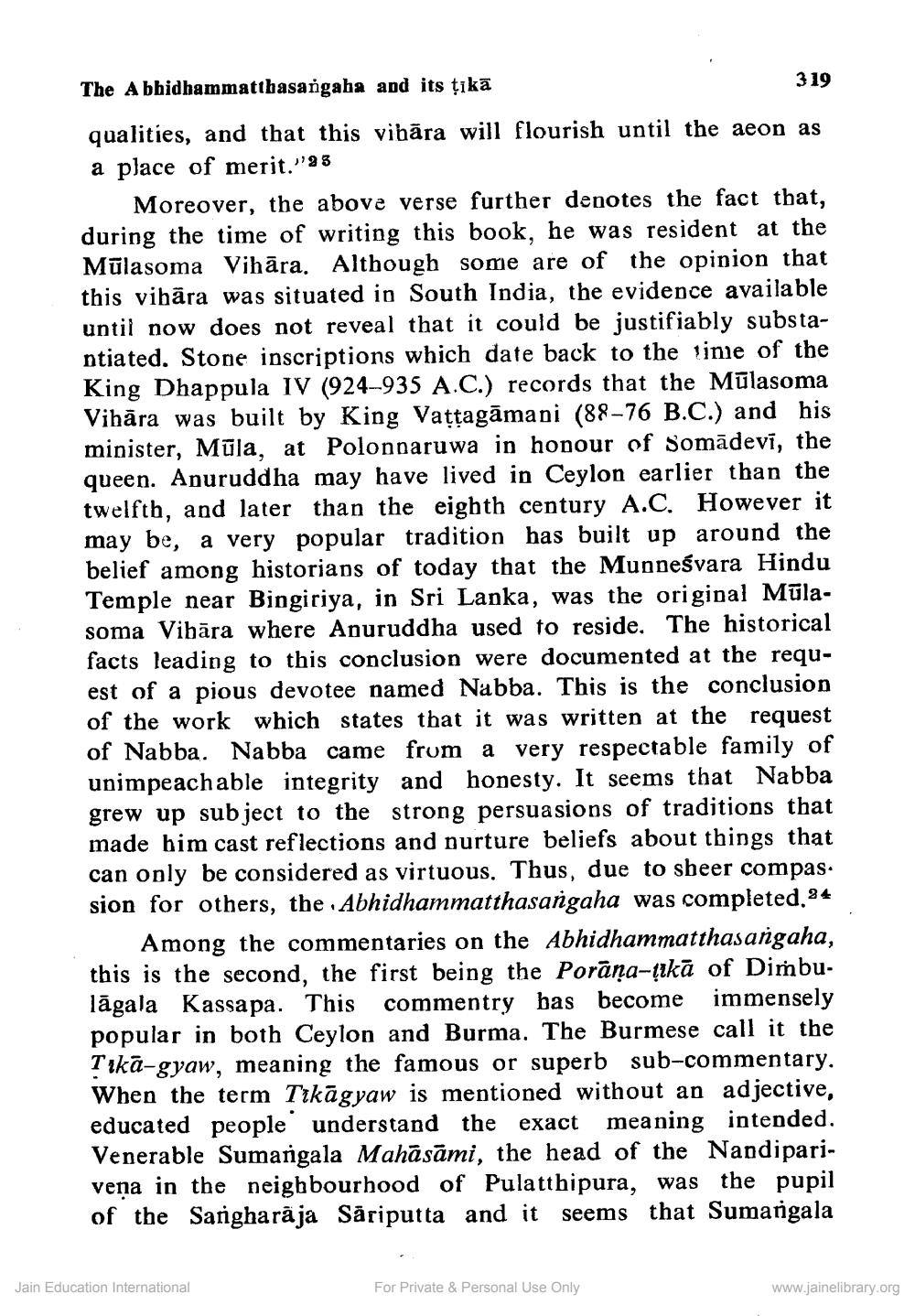________________
The A bhidhammatthasangaba and its tīkā
319
qualities, and that this vihāra will flourish until the aeon as a place of merit.''23
Moreover, the above verse further denotes the fact that, during the time of writing this book, he was resident at the Mūlasoma Vihāra. Although some are of the opinion that this vihāra was situated in South India, the evidence available until now does not reveal that it could be justifiably substantiated. Stone inscriptions which date back to the line of the King Dhappula IV (924–935 A.C.) records that the Mūlasoma Vihāra was built by King Vattagāmani (88-76 B.C.) and his minister, Mūla, at Polonnaruwa in honour of Somādevī, the queen. Anuruddha may have lived in Ceylon earlier than the twelfth, and later than the eighth century A.C. However it may be, a very popular tradition has built up around the belief among historians of today that the Munneśvara Hindu Temple near Bingiriya, in Sri Lanka, was the original Mulasoma Vibāra where Anuruddha used to reside. The historical facts leading to this conclusion were documented at the request of a pious devotee named Nabba. This is the conclusion of the work which states that it was written at the request of Nabba. Nabba came from a very respectable family of unimpeachable integrity and honesty. It seems that Nabba grew up subject to the strong persuasions of traditions that made bim cast reflections and nurture beliefs about things that can only be considered as virtuous. Thus, due to sbeer compas. sion for others, the · Abhidhammatthasangaha was completed. 34
Among the commentaries on the Abhidhammatthasargaha, this is the second, the first being the Porāņa-ţikā of Dimbulāgala Kassapa. This commentry bas become immensely popular in both Ceylon and Burma. The Burmese call it the Tikā-gyaw, meaning the famous or superb sub-commentary. When the term Tikāgyaw is mentioned without an adjective, educated people understand the exact meaning intended. Venerable Sumarigala Mahāsāmi, the head of the Nandiparivena in the neighbourhood of Pulatthipura, was the pupil of the Sarigharāja Sāriputta and it seems that Sumarigala
Jain Education International
For Private & Personal Use Only
www.jainelibrary.org




